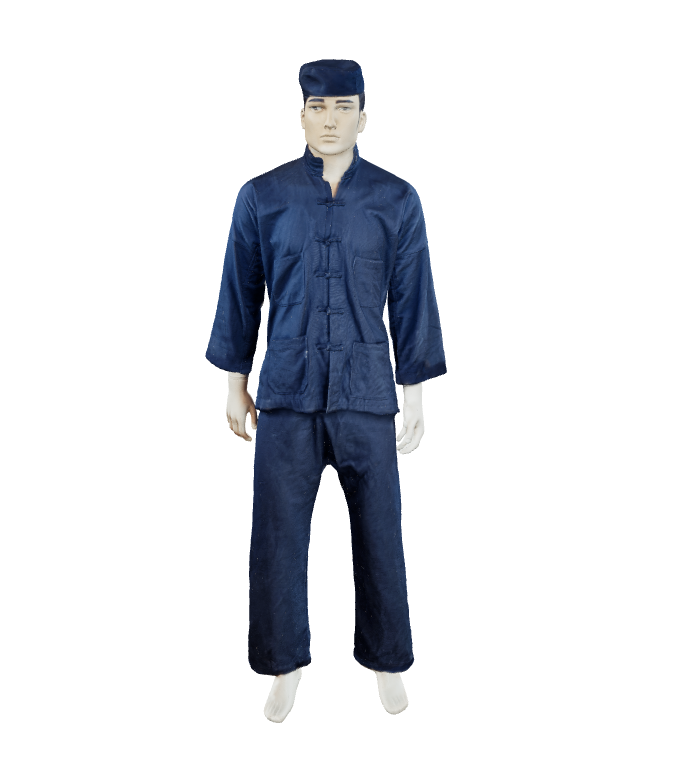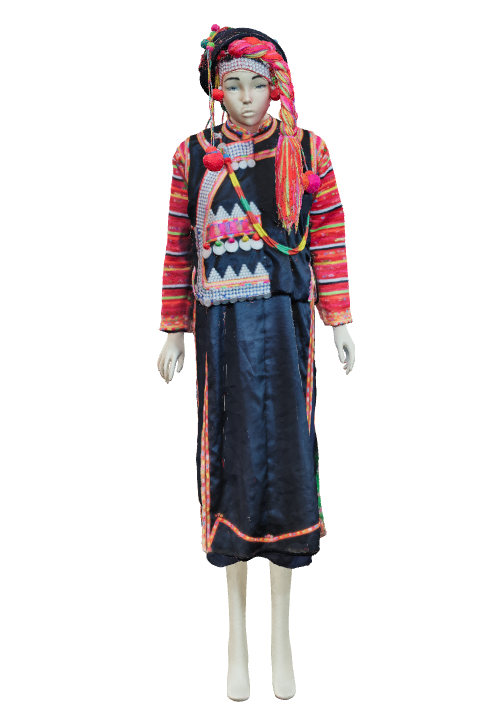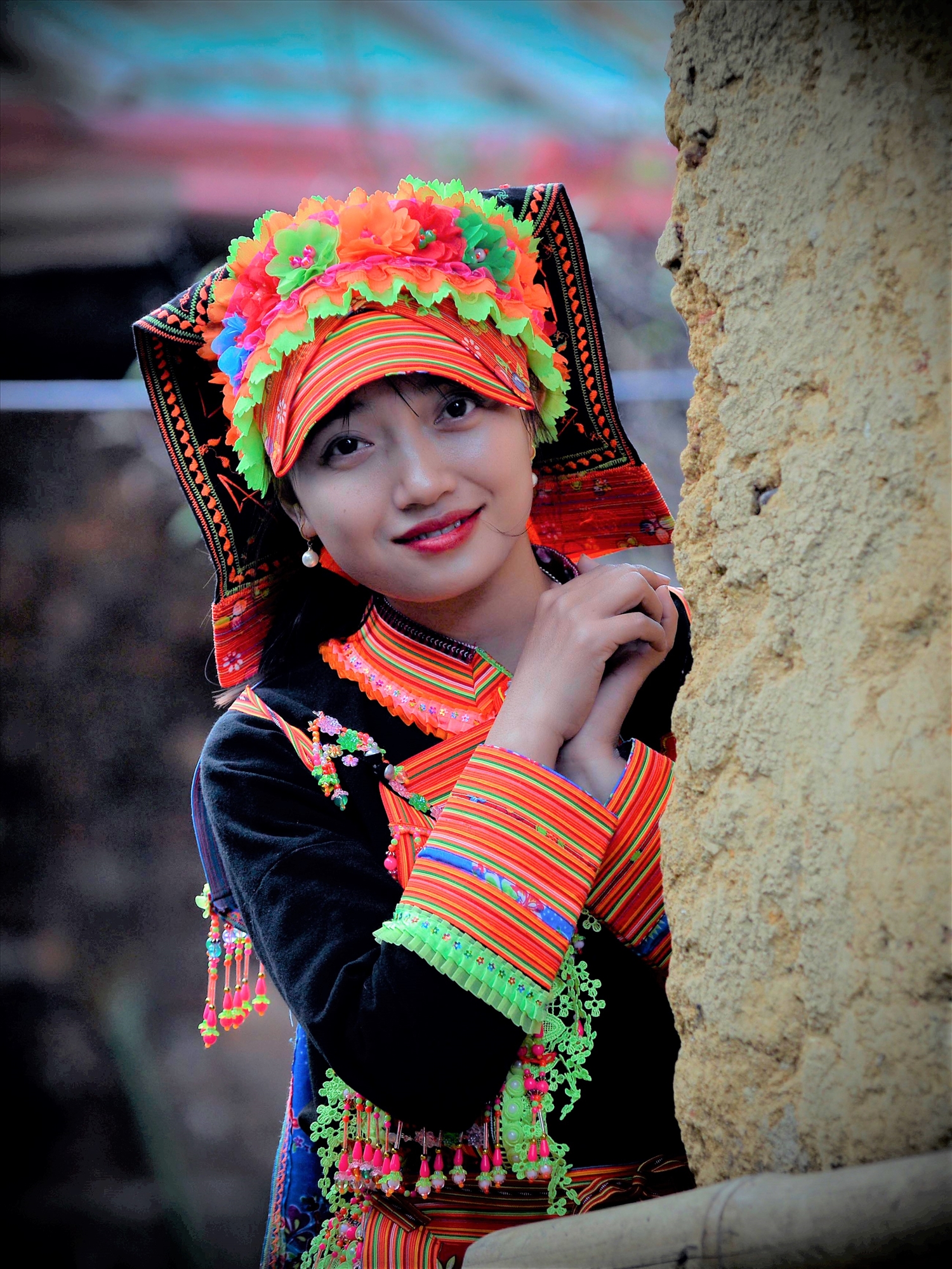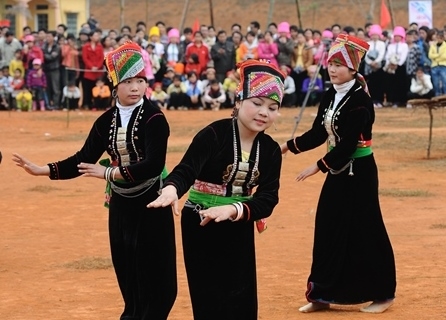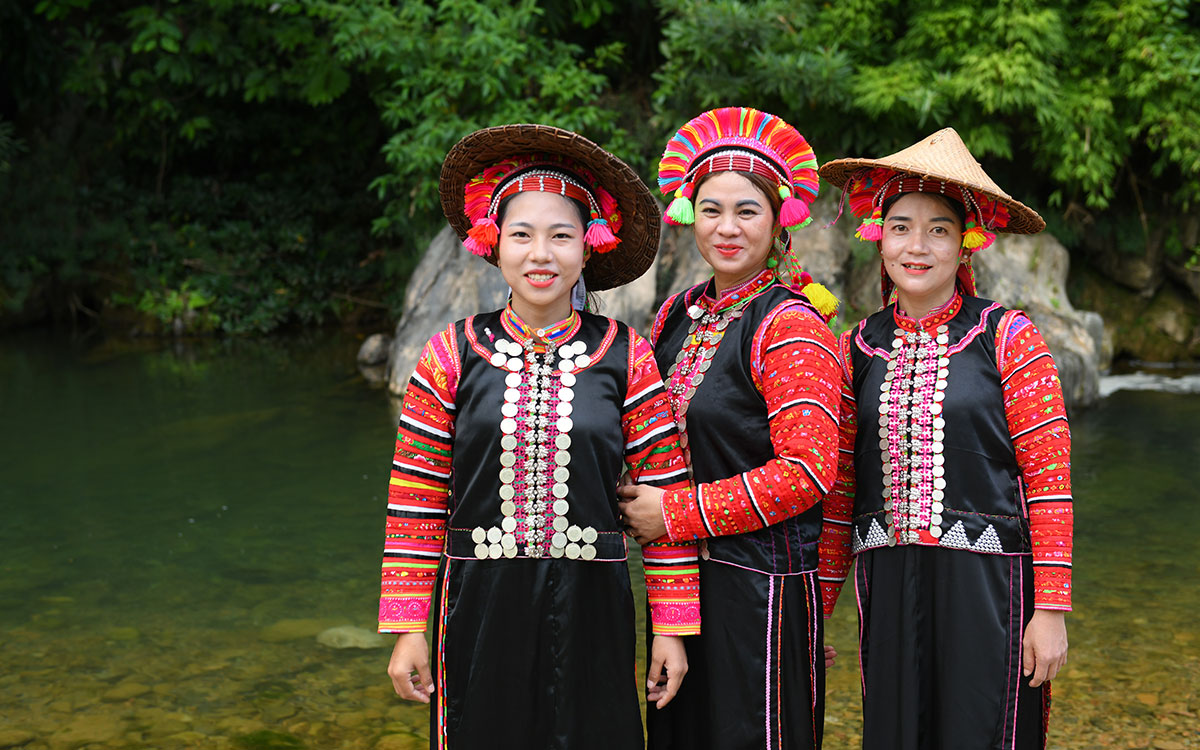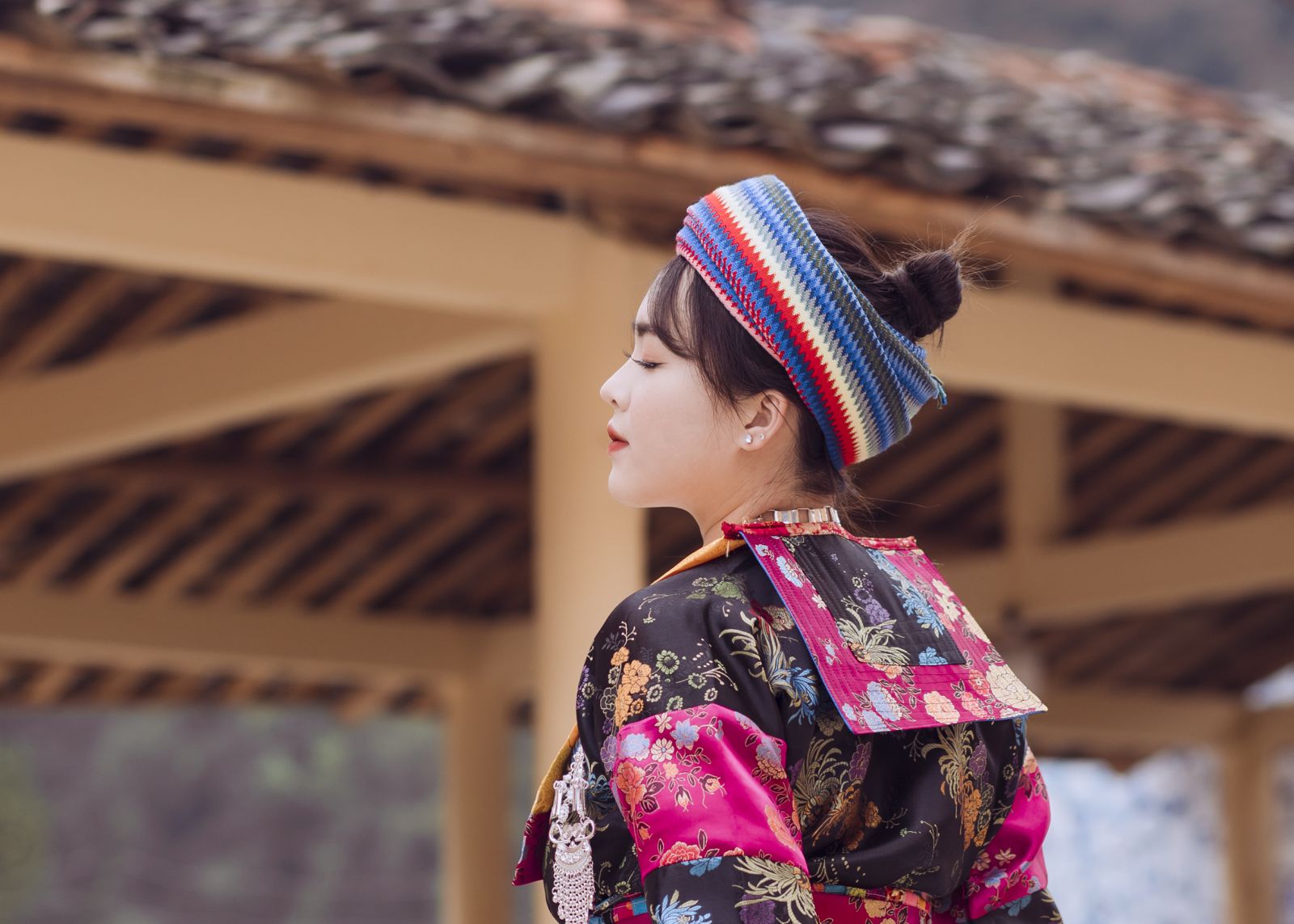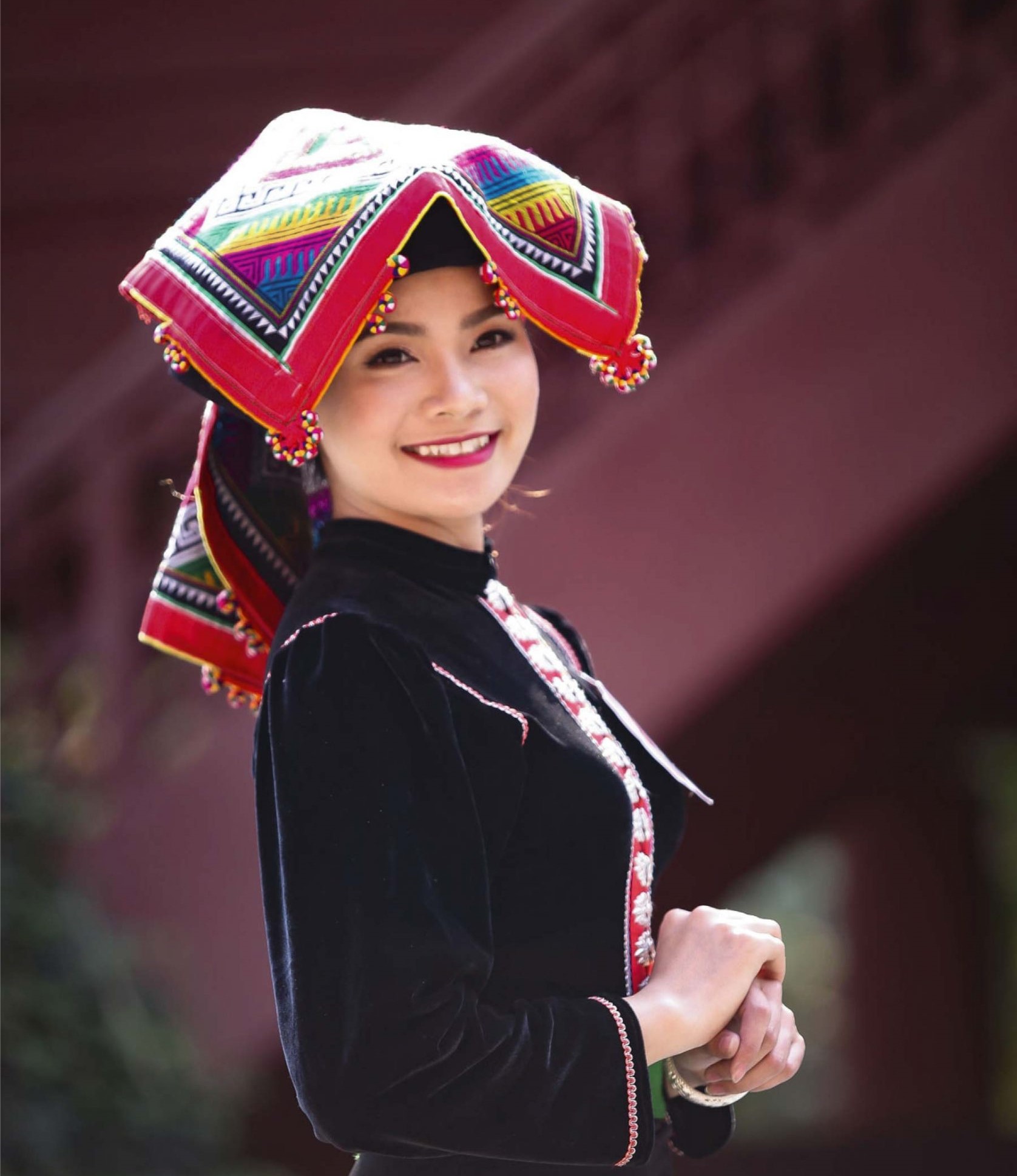HÀ NHÌ ETHNIC GROUP (CHỒ CỒ)
INTRODUCE
- General overview
The Hà Nhì has self-name as Hà Nhì Già (the Hà Nhì people). Formerly, they were commonly known as Xá, Mán, or Xá U Ní, Mán U Ní, U Ní. Since 1954, according to the List of Vietnamese ethnic groups published in 1979, the official name for this ethnic group has been called “Hà Nhì”.
The Hà Nhì people do not have a writing system. Therefore, genealogy and experiences are often passed down orally by people who keep the ancestral altar in oral tradition. The recipient has to keep the family genealogy all my life through memory.
As of December 31, 2018, there were 3,313 Hà Nhì households with 16,003 people in Lai Châu province, constituting 3.55% of the province's total population. The Hà Nhì people mainly live in Mường Tè and Phong Thổ. In Mường Tè, there are 1,888 households with 8,623 people, while in Phong Thổ, there are 1,205 households with 6,434 people.
- Village space
Village in Hà Nhì language is called “Phu”. The Ha Nhi people rarely intermingle with other ethnic groups. Village names are often given according to many different criteria; Sometimes those are characteristics that come from intuitive perception.
For instance, the Mù Cả village (the center of Mù Cả commune), as pronounced by the Hà Nhì people, is called Mò Cá, which means "horse road" (Mò means horse, Cá means road); Similarly, the Ka Lăng place name, known as Gạ Noong in Hà Nhì language, translates to "pond where pigs bathe" (Gạ means pig, Noong means pond, borrowed from the Thái language); Thu Lũm, referred to as Tu hlố by the Hà Nhì, means "cornfield" (Tu is corn, H’lu is field); Ló Mé means "headwaters"; It is also possible that, due to settling after the arrival of the Thái people, the village names were given using words from the Thai language, such as Nậm Lọ, Nậm Hạ, Nậm Lèn, …
Hà Nhì villages are typically situated on the slopes of mountains. The selection of a village location always ensures three factors for the community's livelihood: forests for exploitation to support daily life, residential land for living, and a water source such as streams or rivers for fishing, domestic use, and drinking water.
Previously, when they lived in shifting cultivation and nomadic conditions, their villages were often small in scale, with as few as 5-6 households and at most, not exceeding 20 households. Nowadays, due to the transition to settled agriculture, the villages have become more densely populated.
- Living space
The house is called "Lạ kho" in Hà Nhì language. The Hà Nhì traditional house is “trình” ground-level house constructed with soil, pebbles, bamboo, wood, and grass. The chosen location for building a house typically features relatively spacious ground on the mountain slope. The house foundation is elevated 30-40 cm above the ground, with or without a stone embankment around it. After preparing the foundation, the process of wall construction begins after making offerings to the spirits, the land, and seeking ancestral protection.
The soil for the walls usually consists of yellow clay mixed with extruded termite soil to smooth the walls. This soil is poured with water, kneaded with feet, and left for three days and three nights. Wall construction is done evenly on all four sides and partition walls, layer by layer, from bottom to top, until reaching a height of 3-4m. In addition to pouring earth, thick field stones measuring 30-40cm are embedded in the walls, providing strength. Then, thatch is used for roofing, with a layer of mud applied on top of a bamboo ceiling. This garret serves as both storage space, especially for grains, and insulation against heat and fire. In case of a fire, the mud layer will prevent the flames from spreading downward.
The interior of the house is divided into two parts. The back of the house is the family's bedroom, with the number of rooms depending on the household size. It is also the kitchen. The front half is used as a space for guests with beds and a fireplace. A wide corridor, about 2-3m, is situated at the outermost part for women to weave, sew, and embroider.
Hà Nhì people’s houses are distinctive in the region and are well-suited to the living conditions of the past. In modern times, many houses are made of bamboo and wood with a soil foundation. To prevent flooding, these houses have an earthen foundation and a stone embankment surrounding them. The interior of a house is divided into three main spaces: a central space for hosting guests and communal activities; two side spaces for resting; if the household is large, these side spaces can be divided into separate bedrooms. Additionally, the outside includes stables for horses, pens for pigs and chickens, and a kitchen.
- Cuisine
Hà Nhì people have 3 meals per day: breakfast and dinner are the main meals, while lunch is a snack meal. Breakfast is usually cooked to be eaten both in the morning and at lunch. Breakfast is often eaten quickly to get to work on time. Lunch is usually eaten wherever it is convenient, with rice and dishes. Dinner is the main meal—the time when the whole family reunites.
The meal structure of the Hà Nhì people is quite simple, usually consisting of rice, a few vegetable soups, bamboo shoots, or products obtained from hunting and gathering activities. On special occasions, the community frequently prepares meat dishes with a variety of wild vegetables or bamboo shoots, cooked by boiling, stir-frying, or stewing.
Hà Nhì beverages include tea made from various forest leaves known for their refreshing, blood-enriching, and cooling properties, such as lemongrass (Pò phi), cardamom seeds (Gò xó á nự), “kha lạ pẹ” lemongrass (chè rừng), and especially Tú lẹ lo a pạ - a type of tea found only in Ka Lăng, known for its uniquely fragrant taste. The locals commonly refer to it as "chè cất" (chí pà) and "rượu cái" (chí pà chí pê).

